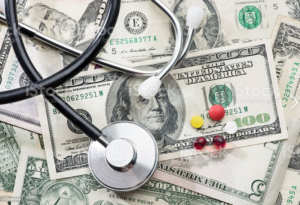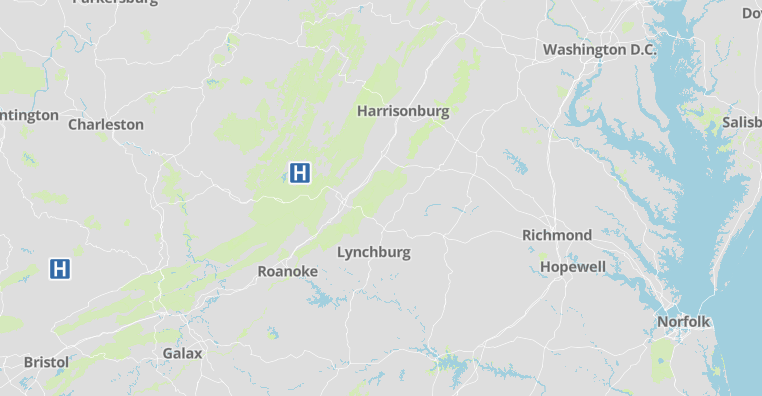by James C. Sherlock
It was widely reported after March 2020 that hospitals had seen steep declines in revenue due to delayed or canceled elective medical procedures and treatments.
That did not translate to the 2020 bottom lines of Virginia hospitals as a group. Net patient revenues dipped, but were made up for by COVID relief money.
In a series of articles we will compare the financial data of Virginia hospitals in 2019 and 2020 for two groups:
- acute care hospitals and rural critical access hospitals; and
- psychiatric, rehabilitation and sub-acute hospitals.
Because Virginia offers COPN protection against competition to incumbents across the state, hospitals had much higher — about 3x higher — than national average operating margins in 2020 (and every other year since I have been tracking it).
Psychiatric, rehabilitation and sub-acute hospitals offer a much more complex financial picture. But they always do. That is for another article.
As is the complex subject of hospital taxes.
But Virginia’s acute care and rural critical access hospitals as a group did very well financially in 2020.
You may remember the breaking news: from April of 2021.
RICHMOND, Va (WAVY) — Hospitals are bleeding money. The Virginia Hospital and Healthcare Association (VHHA) reports revenue losses of more than $1.8 billion in 2020.
VHHA Vice President of Communications, Julian Walker, told WAVY hospitals overall lost a lot of revenue. “Hospitals did receive some relief from the CARES Act, but that relief, even with that relief hospitals still faced about a $1 billion revenue loss,” he said.
Acute care hospitals and rural critical access hospitals. I have downloaded and highlighted state financial records for acute and critical care hospitals for 2020. For reference, the 2019 spreadsheet is here. Please note that these are fiscal year reports, which leaves a few of them — the Ballad Health system and two of Virginia’s biggest hospitals, at the University of Virginia and Virginia Commonwealth University– with only half the calendar year results in each fiscal year.
As a group, key acute care and critical access hospitals’ financial numbers in 2020 included:
- Net Patient Operating Revenue: 2019 – $23.1 billion. 2020 – $22.5 billion. A $650 million drop. That reflects hospital restrictions to elective procedures during COVID;
- Other revenue and gains: 2019 – $640 million; 2020 – $1.3 billion. Huge increase likely traceable in large part to government COVID money. It offset the losses in patient operating revenue;
- Total Operating Revenue – the sum of 1. and 2. above: 2019 – $23.8 billion. 2020 – $23.9 billion, slightly up;
- Operating Income. Total operating revenue minus total operating expenses.
- Operating margins: operating income divided by total operating revenue Dropped from 9.8% to 9.1%. Still more than three times the national average.
The “about a billion dollar” revenue loss of which VHHA spoke must have been in calendar year net patient revenue. There was a $650 million shortfall in fiscal year net patient revenue, but those shortfalls did not make it to the total operating revenue column because of the government COVID payments.
Operations financial data are the most useful for year-over-year and hospital-to-hospital comparisons because they are least affected by highly variable accounting entries that reflect corporate financial decisions. Note as an extreme example in 2020 Bon Secours Memorial Regional Medical Center’s $371 million write-off in non-operating gains or losses.
2020 billion dollar net patient revenue hospitals. Highest to lowest:
- Inova Fairfax (nearly $2 billion)
- VCU Medical Center
- UVa Medical Center
- Carilion Medical Center
- Sentara Norfolk General
2020 net assets released from restrictions, accounted for as operating revenue. Very little to none in every system but Sentara, whose hospitals released $132 million. I have no idea of the story behind that.
2020 non-operating gains and losses. These were absolutely all over the map from Bon Secours Memorial Regional Medical Center’s $327 million loss to Virginia Hospital Center’s $119 million gain.
2020 taxes. Four of the top five in total tax payments were HCA hospitals. The fifth was Sentara Norfolk General. There has to be a story there, but I don’t know what it is.
2020 operating margins. Ten hospitals. Six of the ten were for-profit hospitals. Two rural non-profits are included.
- Bon Secours Richmond Community Hospital – 44% (This issue has been reported here).
- Lewis Gale Hospital Montgomery – 29%
- Reston Hospital Center – 26%
- Russell County Hospital – 23%
- Wellmont Lonesome Pine Mt. View Hospital – 22.5%
- Lewis Gale Medical Center – 22.1%
- Henrico Doctors’ Hospital – 22.0%
- CJW Medical Center – 21.4%
- Sovah Health-Danville – 21.1%
- Inova Alexandria Hospital – 20.7%
There were 28 hospitals with operating margins between 10% and 20%. So, 38 of the total of 82 had positive double-digit operating margins.
Twelve hospitals had negative operating margins, half of which were rural. All were small. All but two of the 12, however, were components of large, profitable systems.
The two money-losing independent rural hospitals were Buchanan General in Grundy and Bath County Community, a critical access hospital.
Bon Secours did the people of Southside a huge favor buying hospitals in Franklin, Emporia and Petersburg from a failing for-profit operator. The deal closed at the end of 2019. We can see from the operating margin variance between 2019 and 2020 that Bon Secours made a lot of headway turning around financially the hospitals in Franklin and Emporia, but Petersburg remains challenging.
Taxes. Also for another article is the subject of taxes. The taxes most people are familiar with are not paid by non-profit hospitals. Those include federal corporate income tax, state corporate income tax, state sales and use taxes, and local sales and property taxes.
As part of the 2019 Medicaid expansion, there is a new provider coverage assessment tax. Public hospitals, children’s hospitals, rehabilitation and critical-access hospitals do not pay it. But, net of the deal, Virginia hospitals have profited greatly from both the increased population with insurance and the increases in Medicaid reimbursements across the board that were included in the 2018 deal with the governor and the General Assembly.
Struggling hospitals. It is right to worry about the financial viability of independent hospitals in Bath County in the Northwest and Buchanan County in the Southwest. Their abilities to recruit and retain medical professionals and serve their communities are severely compromised.
Bath Community Hospital serves Bath, Highland, and Alleghany Counties on the West Virginia border. The hospital is centrally located among them. Highland County ranks in the middle of public health outcome and factors rankings. Bath and Allegheny are in the bottom quintile in health factors. See the Community Needs Assessment.
Buchanan General Hospital serves Buchanan County and the surrounding counties in Virginia, Kentucky and West Virginia. Read the hospital’s Community Needs Assessment. They do what they can, but most needs are unaddressed. Buchanan County ranks among the worst of 133 Virginia jurisdictions for both Health Outcomes (123) and Health Factors (132). Petersburg is last in both categories. A tri-state compact should be considered to help this hospital.
Bottom line. Virginia acute care and critical access hospitals, with the exceptions of Buchanan General and Bath Community Hospitals, seemed financially secure at the end of FY 2020. FY 2021 data will be available in December and we will take another look then.
When we compare our hospital operating margins to those nationwide, we see that Virginians pay a very high premium on our insurance bills and co-pays for that outcome.
Virginia acute and critical access hospitals as a group could have shed $1.548 billion in operating income in 2020 and still posted higher than national average operating margins.
In a coming article we will look at the massive tax expenditures by our state government and local governments for exemptions for our dominant non-profit hospitals. Those tax expenditures are of course made up for by other taxpayers.
Even after Medicaid expansion wiped out most of the non-profit hospitals’ charity care expenses.
There should be more than enough money sloshing around in not-for-profit hospital accounts to help the troubled hospitals in Buchanan and Bath counties.
Perhaps the Virginia Hospital and Healthcare Association (VHHA), the source of the “bleeding money” report, can pass the hat among its members. Or use Virginia HosPAC money. The first two purposes of HosPAC are:
- To preserve Virginia’s high-quality health care
- To protect our patients’ access to care
Here’s their chance. With just little of the king’s ransom of extra income that COPN buys them.
Or perhaps we can take a look at the tax code. Which we will do in another article.
Updated 23 October at 16:35.
The figure for Virginia acute care and critical access hospitals operating income in excess of the figure that would have yielded national average operating margins is $1.548 billion. It was posted originally at a much lower figure.



